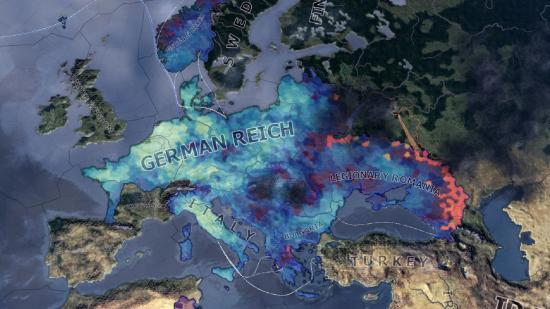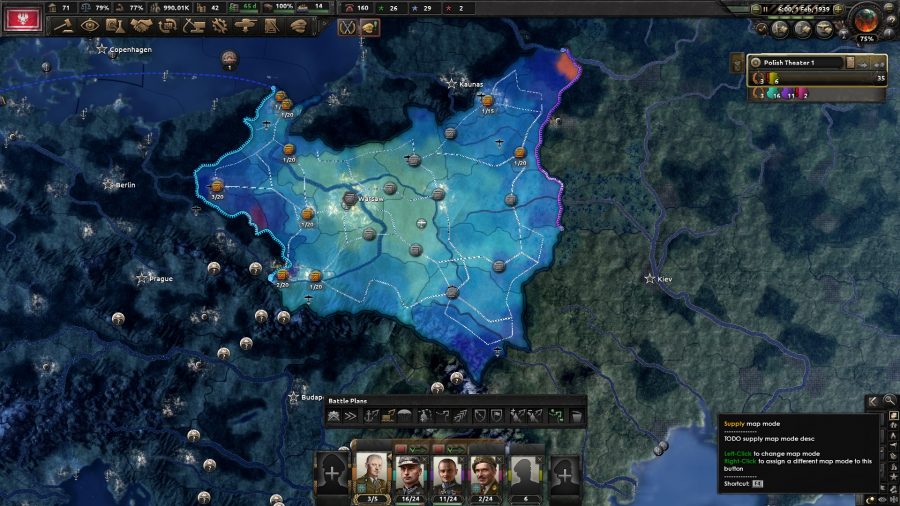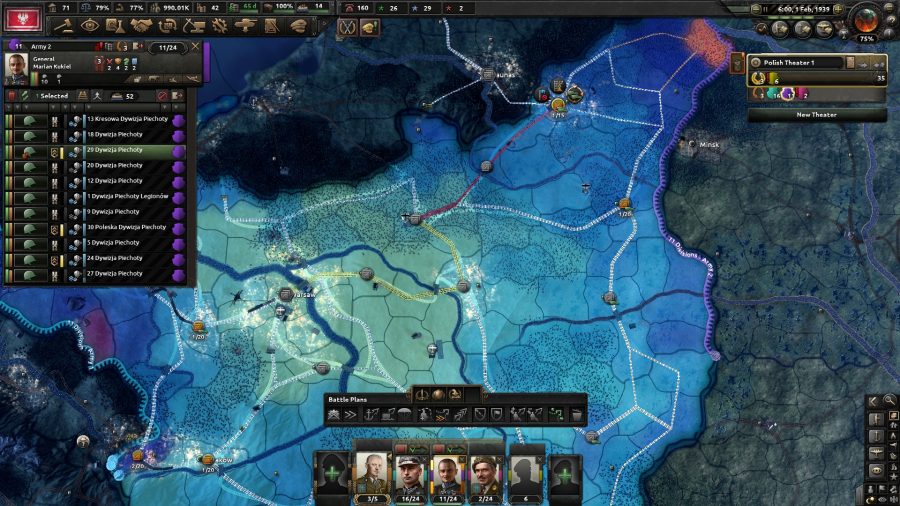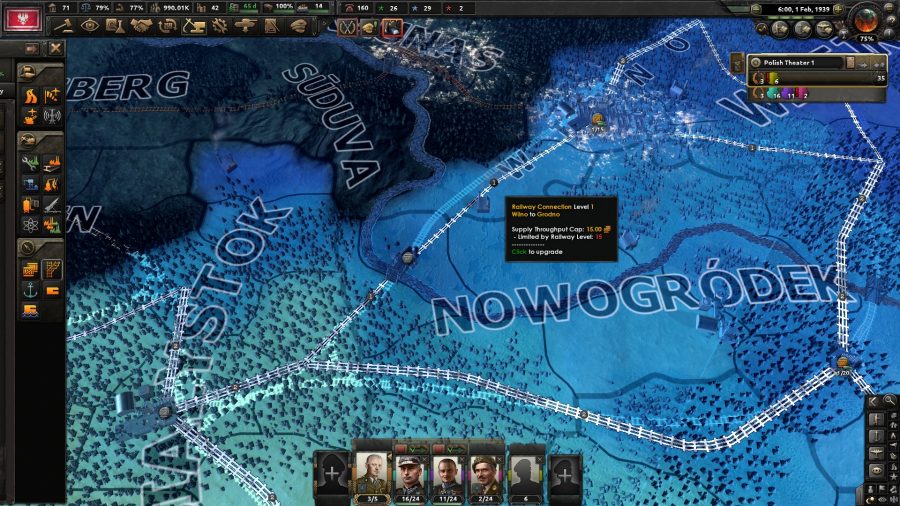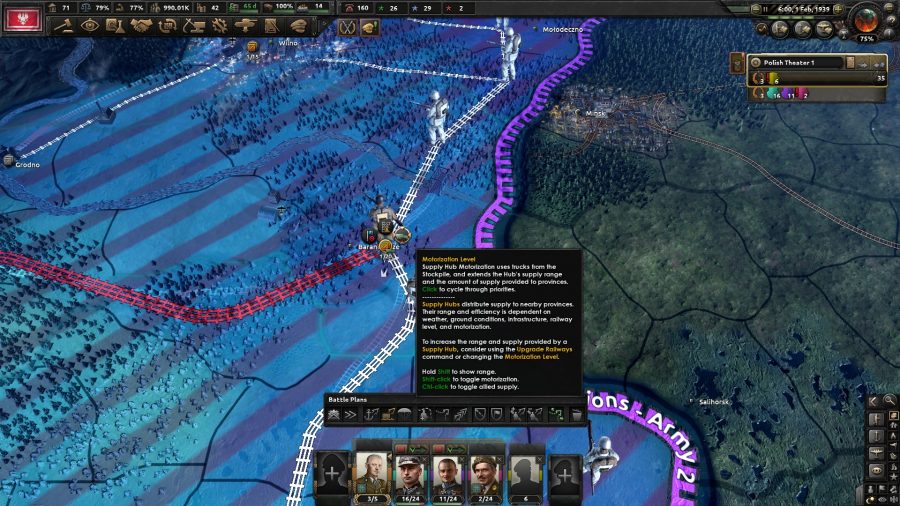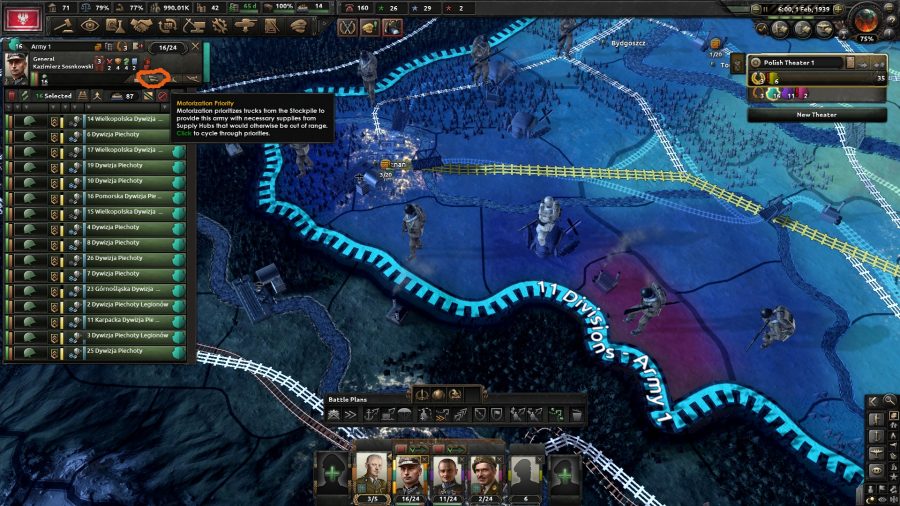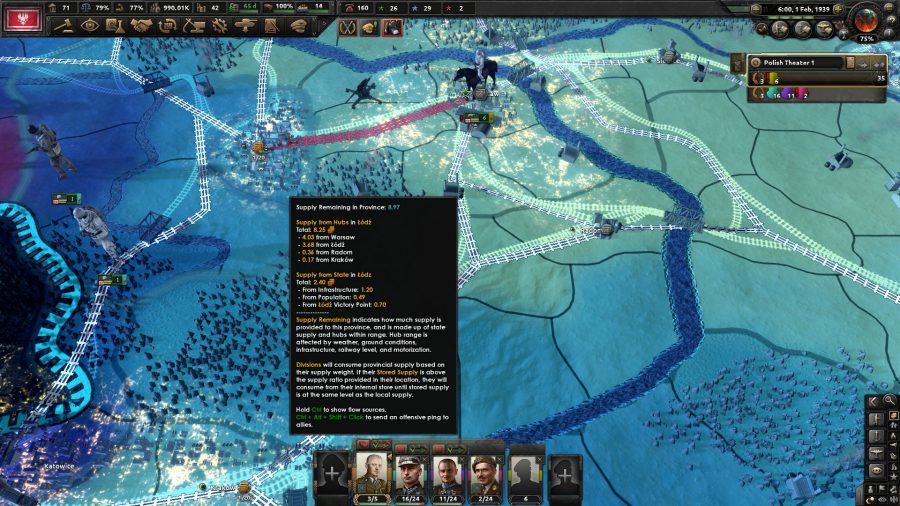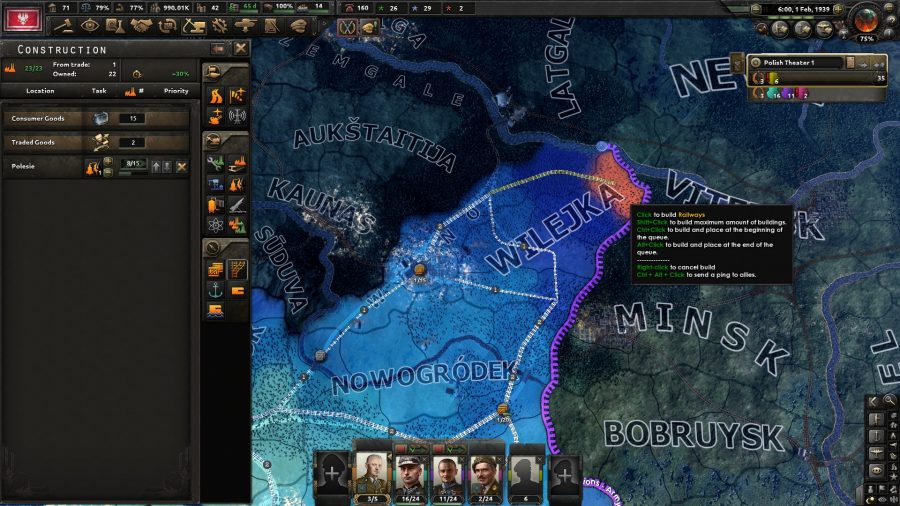So, you want to know about Hearts of Iron 4 supply? The grand strategy game’s recent expansion, No Step Back, along with the free 1.11 patch brought about some significant changes to how supply and logistics work. Not all of these changes have been explained clearly either, leaving many players a bit confused.
We’re here to help clear things up and provide you with a basic primer on the new supply mechanics and how they interact with the game’s combat mechanics. It’s worth noting that there was some very clear design intent behind these changes, as game director Peter Nicholson recently intimated – just because things are going wrong, doesn’t mean the system isn’t working as intended.
We’ve drawn from a few sources to help put together this guide. FeedBackGaming’s rather ad hoc tutorial video explains things quite well, but it’s worth revisiting the relevant developer diaries as well, although it’s worth noting that many previously discussed features have changed across the supply system’s development.
Hearts of Iron 4 New supply system
It’s important to note that, essentially, supply fundamentally works the same. Most of your nation’s supply originates from the capital city, just like it did pre-No Step Back. The way that supply radiates out to your armies, however, has changed significantly.
Supply is now handled at a province level, rather than a state level. Individual provinces have a local supply pool that Divisions can draw from, which is determined by local population levels and the state’s infrastructure. Otherwise, that supply is given to the national network.
At a national level, Supply is taken from your capital and sent outwards via your rail network to supply hubs. A supply hub is only considered active if there are divisions nearby that need to draw supply, otherwise it’s sent along the network to the next active hub.
HOI4 supply – hubs and railways
The amount of supply a supply hub is able to process depends on the level of the railway network between the capital and that hub – including any other hubs the supply passes through along the way. The lowest value railway will cap the level of supply a hub can send on, or hold to give out to local divisions, both of which use the same value.
If you have three railway segments between a hub and the capital, and one of those segments is level one but the others level two, the supply hub will only be able to handle 10 supply. It will either send 10 on further along the network, or it will only have ten supply to give out to local divisions. The level one rail network is acting as a bottleneck.
It’s important then to make sure every segment of railway between important supply hubs and the capital are kept at the same level. Some additional tips:
- It doesn’t matter how long the rail route is, what matters is the level of each section of railway.
- If you click on a supply hub in the supply map mode, three buttons will appear. One of these is to upgrade the entire railway network between it and the capital to the same level.
- Supplying a rail route will require your nation to have a stockpile of trains – if you don’t have any for whatever reason, supply won’t flow out to the supply hubs in the first place.
- Building railways is the same as buildings and other things via the construction interface, although they are relatively cheap in terms of production value.
Hearts of Iron 4 supply – supplying armies
Once supply has reached the hub or hubs closest to the frontline, it then needs to be able to get to the fighting divisions so that they can maintain their combat effectiveness. Several factors can influence how supply gets to the divisions, including:
- The infrastructure level of the state
- The motorisation level of the supply hub
- Whether a division is accessing more than one hub
The motorisation level is something that’s easily missed. Supply can be sent out from hubs either using basic methods, represented by a horse symbol on the interface, or various levels of motorisation using trucks.
Trucks have more range, but they also require trucks to be present in your national stockpile to be used. Unlike trains, in theory you would be constructing trucks anyway as they also double as equipment assigned to Divisions for certain support companies like Field Hospitals, although it’s worth bearing in mind that you now have more things competing for the overall ‘truck’ resource, so you will need to make sure you’re building plenty of them.
One pro-tip: You can set the level of motorisation either at the individual supply hub level, or at the Army level via the army interface screen. That army will then automatically change the motorisation level of every supply hub it’s in range of. Once it moves out of range, that supply hub will default back to its original setting.
Also note that Divisions now carry a basic amount of supply with them at all times, assuming they can access the supply network to replenish. It’s also now more normal for divisions to not be at 100% supply all the time. This will take some getting used to, but Nicholson expands a bit on this in terms of when players should be actively concerned about supply issues.
Hearts of Iron 4 supply – tips & tricks
A province can only ever have one supply hub, and supply hubs only have one level of existence, unlike railways, forts, or ports.
Premium features associated with the supply system that you will need the No Step Back expansion for are the Logistics Strike air mission, which targets trains and railways, and the Scorched Earth state interaction which will sabotage not only the state infrastructure, but also the railways as well. You can also construct Mulberry Harbours to faciliate naval invasions.
Supply hubs are prohibitively expensive without using the special decision most nations have access to that makes them faster to build. For context, the cost is the same as two civilian factories, so you really have to plan when you’re going to build more. It will likely almost always be easier to just take over existing supply hubs.
If you think your railway and infrastructure is good but you’re still having supply issues, make sure you have enough trucks, trains, or if an overseas route is involved, convoys. Also remember that terrain can have a massive impact on supply, as it did prior to the changes.
Related: Hearts of Iron 4 cheats and console commands
Last but not least, remember that the size and amount of divisions in one area will ultimately determine how good your supply situation will be. The current meta seems to be shifting away from larger divisions in favour of smaller ones, but regardless of size too many people in one place is going to overwhelm any supply network, no matter how good it is.
